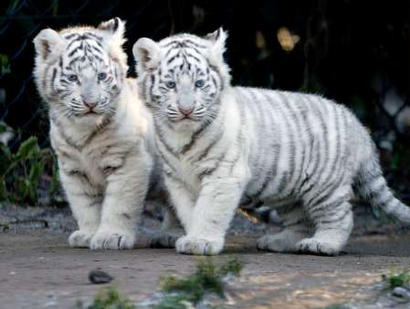Pirates of Tai Chi
/ North Atlantic Press has put out a whole bunch of great martial arts books, many of which need a lot of editing. Among them is: Scholar Boxer, Chang Naizhou's Theory of Internal Martial Arts and the Evolution of Taijiquan with complete translation of the original writings (editied by Xu Zhen, 1932), by Marnix Wells. See, even the title needs editing! Yet, it is the best attempt at a history of Taijiquan's actual historic origins I have seen.
North Atlantic Press has put out a whole bunch of great martial arts books, many of which need a lot of editing. Among them is: Scholar Boxer, Chang Naizhou's Theory of Internal Martial Arts and the Evolution of Taijiquan with complete translation of the original writings (editied by Xu Zhen, 1932), by Marnix Wells. See, even the title needs editing! Yet, it is the best attempt at a history of Taijiquan's actual historic origins I have seen.It's a tough challenge. The textual sources are really limited and he seems to have drawn on most of them. I, of course, would want to look into actual Daoist writings, but I'm not optimistic that relevant late Ming or early Ching Dynasty Daoist sources are going to surface anytime soon, if they exist. I would also look in theatrical sources. He does deal with Shaolin Buddhist origins, and that's great. Aye...maties, but here is the money quote:
"Qi Jiguang's boxing, the major source of Taijiquan techniques, and the internal School Boxing of Wang Zhennan are both traceable to maritime Zhejiang in the early sixteenth century. Its city of Ningbo had been the official port for Japanese missions. After their forced termination in 1549, its off-shore Zhoushan Island became a base for Japanese and local pirates. It was there that Qi Jiguang describes learning the practical art of boxing in Major Liu's thatched hall. Manuals by generals Qi Jiguang, and his mentor Yu Dayou, leaders against Japanese pirate attacks, provide us with the first detailed knowledge of Chinese (internal) fencing and boxing." [Page 7.]
 Dude, you hear that! Taijiquan comes from fighting pirates on the sea! Johnny Depp look out! After Pirates of the Caribbean 3, we can make Tai Chi Pirates of Zhejiang!
Dude, you hear that! Taijiquan comes from fighting pirates on the sea! Johnny Depp look out! After Pirates of the Caribbean 3, we can make Tai Chi Pirates of Zhejiang!I always felt like all those dantian circles had something to do with the sea. When you are fighting on boats for weeks at a time all your organs learn to move with the natural pulsation of your "sea-legs." I know my Chen style Taijiquan improved a lot after a month of working 20 hours a day standing in a modified horse stance on fishing boats in Alaska.


 As time has passed I feel my use of higher stance training (still an hour a day) has helped develop more freedom and naturalness in my everyday movement. This is sometimes called, "Writing the Classics (jing) on your bones."
As time has passed I feel my use of higher stance training (still an hour a day) has helped develop more freedom and naturalness in my everyday movement. This is sometimes called, "Writing the Classics (jing) on your bones." The Black Taoist is an internal martial artist (neijia) and teacher of exceptional skill. His website has a
The Black Taoist is an internal martial artist (neijia) and teacher of exceptional skill. His website has a  Youtube is truly amazing. It will no doubt completely and fundamentally transform marketing for anything that moves or incorporates learning.
Youtube is truly amazing. It will no doubt completely and fundamentally transform marketing for anything that moves or incorporates learning.
 For most people looseness and softness will add more ease to ones normal daily life than flexibility will; activities like brushing one's teeth, picking up children, riding a bike, and getting into a good seat at the movies when we arrive after the lights have gone down.
For most people looseness and softness will add more ease to ones normal daily life than flexibility will; activities like brushing one's teeth, picking up children, riding a bike, and getting into a good seat at the movies when we arrive after the lights have gone down. re parts of one's body that are very soft and other parts which are rigid- a muscle imbalance problem not a softness problem. Softness is a problem when paired with rigidity or when there is so much deficiency in the underlying structure that the muscles no longer function. The development of true strength is aided by softness and built on underlying structure. (What we sometimes call jing.)
re parts of one's body that are very soft and other parts which are rigid- a muscle imbalance problem not a softness problem. Softness is a problem when paired with rigidity or when there is so much deficiency in the underlying structure that the muscles no longer function. The development of true strength is aided by softness and built on underlying structure. (What we sometimes call jing.) I've studied both types to Xingyi quan (hsing i ch'uan), Wuxing (Five element) and Liuhe (six harmonies), but I've trained Liuhe a lot more. Both are powerful internal fighting arts. Both can be performed in a small space.
I've studied both types to Xingyi quan (hsing i ch'uan), Wuxing (Five element) and Liuhe (six harmonies), but I've trained Liuhe a lot more. Both are powerful internal fighting arts. Both can be performed in a small space.  Spear training is evident in luohe xingyi both in the stepping and in the shrinking of the body size, not to mention the turning maneuvers and the focus on forward movement. I really can think of no martial art that is better designed for fighting with a group in tight formation, shoulder to shoulder.
Spear training is evident in luohe xingyi both in the stepping and in the shrinking of the body size, not to mention the turning maneuvers and the focus on forward movement. I really can think of no martial art that is better designed for fighting with a group in tight formation, shoulder to shoulder. If you read Stephen R. Bokenkamp's excellent Book
If you read Stephen R. Bokenkamp's excellent Book